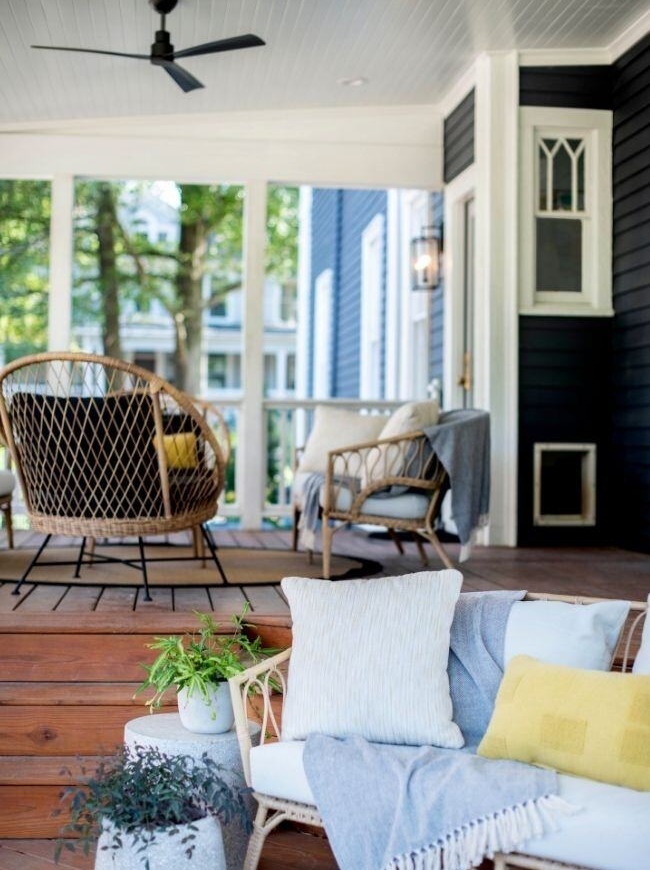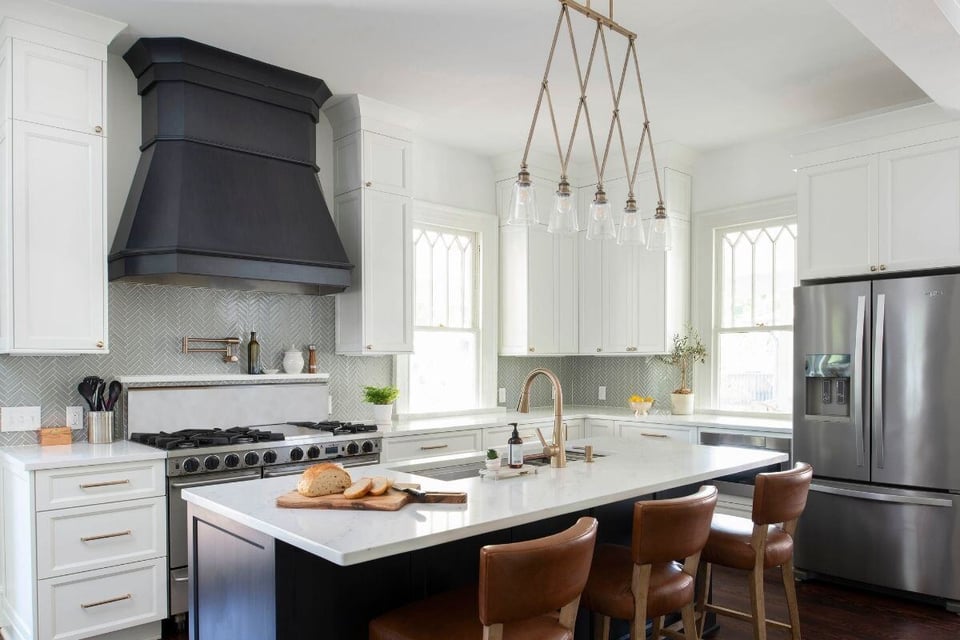4 Min Read
Historic Homes Along the Connecticut Shoreline: What to Know Before Remodeling
From Guilford to Old Saybrook, the Connecticut shoreline is dotted with centuries-old homes that tell the story of New England’s architectural past. If you're fortunate enough to own, or are planning to purchase, a historic property in this region, remodeling can be incredibly rewarding, but it also comes with unique complexities. Whether you're undertaking a historic home remodeling project on the Connecticut Shoreline or just starting your research, understanding what lies ahead is key.
This guide covers what to know before remodeling a historic home in Connecticut, especially in renowned towns like Essex, Madison, Old Lyme, and Guilford. We’ll answer common questions, review major challenges, and help you plan a renovation that balances modern function with timeless charm.
What Makes a Home "Historic" in Connecticut?
In general, a home is considered historic if it is at least 50 years old and has architectural, cultural, or historical significance. Many towns along the Connecticut shoreline historic districts have official registries and zoning regulations that impact how these homes can be modified. Before planning any work, it’s essential to understand your home’s status within local, state, or national historic registers.
Key Things to Know Before Remodeling a Historic Home in Connecticut
If you're wondering what to know before remodeling a historic home in Connecticut, here are the top considerations:
1. Historic Designation may limit your options
If your property is listed on a historic register or located within a designated historic district, there may be legal restrictions on changes to the exterior, windows, roofing, and even paint colors. In towns like Essex, Old Lyme, and Madison, local preservation commissions often require special review and approval.
You’ll likely need to obtain special permits to remodel a historic home in CT, especially for significant exterior changes. This often involves submitting plans for approval and ensuring your renovations maintain the architectural integrity of the original structure.
2. HIRING THE RIGHT EXPERTS IS CRUCIAL
Hiring architects for historic homes in Connecticut is one of the most important steps you can take. An experienced architect will understand the nuances of historical styles and work within preservation guidelines while adapting the home for modern living. Similarly, working with local contractors for historic renovations ensures compliance with town-specific rules and access to specialized craftsmen.
At Craft Design + Build, we are proud to be Madison, CT, historic renovation experts, as well as trusted design and build remodelers in the area. We bring deep knowledge of New England building traditions to every project.
3. UNDERSTAND THE COSTS AND TIMELINE
The cost of remodeling historic homes in Connecticut can be significantly higher than standard renovation projects. That’s because of specialized materials, intricate labor, and potential surprises (like outdated wiring or hidden structural issues). You’ll also need to account for longer timelines due to permitting and architectural reviews.
However, the benefits go beyond aesthetics. A well-renovated historic home offers lasting value, tax benefits, and a unique connection to the region's heritage.

Challenges of Renovating Historic Properties
Understanding the challenges of renovating historic properties can help you plan accordingly. Some of the biggest issues include:
- Hidden damage: Water intrusion, rotting wood, or outdated mechanical systems are common surprises.
- Code compliance: Modernizing while meeting current building codes can be tricky, especially with structural changes or energy updates.
- Material sourcing: Finding authentic materials for historic home renovation, like antique wood flooring or period-appropriate windows, takes time and expertise.
- Preservation vs. progress: Maintaining historic character while remodeling can be a delicate balance when modern needs (like open floor plans or large bathrooms) don’t align with original layouts.
Modernizing a Historic Home While Preserving Character
It’s a common question: How do you modernize a historic Essex, CT home while preserving character?
The answer lies in balance. Here’s how we approach it:
- Respect the layout: Keep or adapt the original floor plan rather than forcing modern configurations.
- Use era-appropriate materials: Reclaimed wood, hand-milled trim, and lime plaster can replicate the original look.
- Hide modern systems: HVAC, plumbing, and insulation upgrades can often be integrated subtly to avoid disrupting the aesthetic.
- Incorporate design cues: Hardware, lighting, and color schemes should reflect the time period while meeting today’s needs.
Our team specializes in Connecticut coastal home remodel projects that blend history and function seamlessly.
Energy Efficiency in Historic Homes
Older homes weren’t built with modern energy standards in mind, but that doesn’t mean you can’t improve them. With the right approach, you can enhance energy efficiency in historic homes while still preserving their original charm.
Here’s how:
- Upgrade insulation carefully - Add insulation to walls, attics, and crawl spaces using methods that won’t damage plaster or original framing.
- Install energy-efficient windows - If you can’t preserve original windows, consider wood-framed replacements with double glazing that mimic historic profiles.
- Seal air leaks - Use weatherstripping, caulk, and door sweeps to prevent drafts, especially around windows, doors, and fireplaces.
- Choose efficient HVAC systems - High-efficiency heating and cooling systems can often be retrofitted without major structural changes.
- Use storm windows and doors - These can provide insulation without replacing original features.
Each improvement should be tailored to your home’s age, structure, and materials. A knowledgeable renovation team will help strike the right balance between comfort and conservation.
Tax Incentives for Historic Renovation in Connecticut
If your home is listed on the National Register of Historic Places or located in one of the many Connecticut shoreline historic districts, you may qualify for valuable tax incentives for historic home restoration.
These benefits can include:
- Property tax abatements for approved renovations
- State or federal income tax credits for qualified rehabilitation work
To access these programs, you’ll need to follow specific guidelines and submit documentation for review. Your best first step? Talk to your renovation team; they can help ensure your project qualifies and guide you through the process.
Design Inspirations for Historic Homes
When it comes to historic home design inspirations, the Connecticut shoreline is a treasure trove of architectural beauty, from Colonial farmhouses to stately Victorians.
Here are a few timeless design ideas to inspire your renovation:
- Reclaimed wood flooring - Use wide-plank pine or oak floors to replicate the original craftsmanship.
- Traditional millwork and trim - Crown moldings, chair rails, and paneled wainscoting add period-appropriate detail.
- Authentic hardware and lighting - Look for reproduction fixtures or antique salvage that reflects your home’s era.
- Restored fireplaces and mantels - A classic hearth can become a stunning focal point, especially when paired with original brick or stonework.
- Historic paint colors - Soft creams, muted blues, and deep earthy tones often reflect authentic colonial and Victorian palettes.
Blending these elements with modern comforts creates a space that’s both livable and true to its roots.
Historic Home Remodeling Done Right with Craft Design + Build
At Craft Design + Build, we specialize in transforming historic properties with the care, skill, and respect they deserve. From historic home renovations in CT to coastal home remodels, we bring unmatched craftsmanship and deep knowledge of New England architecture to every project.
Ready to restore something timeless? Contact Craft Design + Build today to begin your historic renovation journey.



.jpg?width=352&name=Blog%20Images%20(5).jpg)
